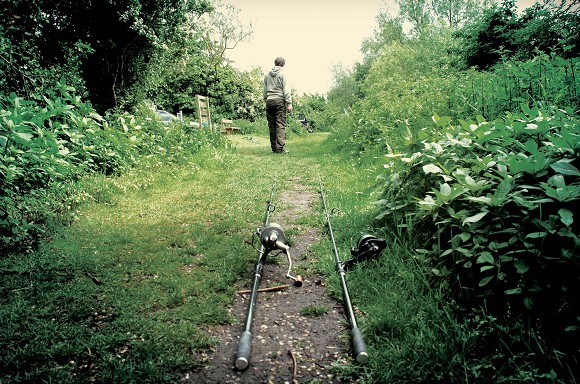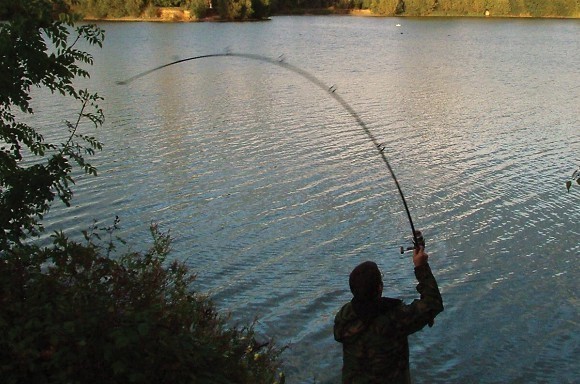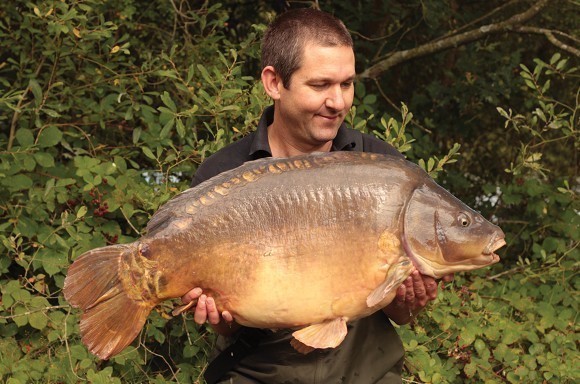
Walking out to hit your marks
Not overly keen on the marker sticks? Then opt for the oldest method going: simply walking your lines down the bank. Here’s Gardner Tackle’s Lewis Read with a breakdown of how he does it…
Why walk your rods out over using marker sticks?
“Is there really any significant difference? All you’re doing with either method is measuring out the range to a clip in a controlled way so that you can repeat it and gain metronomic consistency with your casting range. Hit the clip, down she goes, everything nice. If anything, having used both methods now for a while, I’m erring on the side of ‘sticks’ method as the better long-term approach, simply because you can write down ranges in a book, noting skyline features or other stationary bankside targets to aim at on the cast and this enables you to get your rigs out there perfectly without the need to initially lead to check a feature out. How can you do that walking out? Another benefit of wrapping up is it is also a lot more convenient for fishing at range on venues where you simply might not have the space to walk a line out over a long distance.”
What’s the process then: I’ve found my spot with a marker rod, but at what angle do I hold the rod to clip-up? And do I leave the float on the surface or reel it down to the lead?
“These days I hardly ever use a marker float! The lakes I fish are relatively shallow and I know that by walking the rod out or wrapping up I can achieve a high level of accuracy. I prefer to find the ‘spot’ with a bare lead on a Dyneema braided main line (the low stretch in braids like our ‘Kinetic’ main lines accentuates the feel of the lead hitting the lakebed and the texture of the lakebed) and clip-up immediately with the line put in the clip exactly at the range the lead hit the lake bed (you will have it trapped on your forefinger presumably). Then it’s one more chuck to check the clip’s in the right place and then either walk it out or wrap it up.”
So I’m all clipped-up, what’s next? Do I walk that rod out first until I hit the clip and then mark this on the ground?
“Sounds about right. Use a permanent fixture at the back of the swim like a post or similar and walk the leading/marker rod out until you hit the clip and stick a peg in the ground. If you make sure everything is laid out straight then the range can be repeated easily. Next put your fishing lead in the same spot you had the marker lead (or in my case, just a bare lead), walk to the peg and once at the same range, pop the line under the clip. When I do walk my lines out, I still mark them with a stop knot tied with a dedicated marker elastic like our ‘Mark-It’ as this makes walking out much quicker and easier if you have to re-chuck.”
I’m clipped-up on both rods then, what’s the score with the cast? Nice and smooth and ensure the rod ends up in the same position as I held the marker rod when I clipped it up?
“Try not to overcast, if you ‘hit the clip’ too far up in the air then the lead is likely to land in a heap or bounce back, landing short of the mark. If you use the rod as a shock absorber, holding it up vertically and then letting the pull of the lead flatten the rod out and buffer the hit on the clip, you will effectively smooth out the cast and improve the accuracy and consistency of your casts.”
What about the spod rod – do I clip this up to the same distance or will that differ as that’s landing on the surface and not swinging down to the lakebed?
“Ooooh! Now this is a trickier one. In water that is say less than 6 or 7ft I find the swing in is negligible (depending upon casting technique of course) and I clip the spod rod up at the same range. I’d rather the freebies land on the far side of the rig so this suits me fine. If I started fishing deeper venues regularly then I would initially use a marker float arrangement to check out the swing back of the lead and compensate by shortening the spod rod line accordingly. This can be done by using a nugget of Dissolving Rig Foam and watching where it pops up in relation to the float. Use this as your guide and the job is a good ’un.”
Any advice if there’s a crosswind blowing?
“If the venue is deep enough, using a bigger lead and holding the rod down to the side near the surface means that most the bow in the line will be taken out as the lead plummets to the lakebed. This works in all but the most testing crosswind or in shallow water. If you need to, you may need to allow a bit more line on the clip and I try to take the guesswork out of it by casting out to the clip and then using some tension on the rod tip to see how much slack can be drawn back before I am tight to the lead. This is a good guide to how much extra line you need to feed out to allow for the bow in your line. Even after doing this, it can be frustrating setting traps and not being 100% certain everything is perfect, but in really extreme gusty weather it’s not always going to be possible to get everything as accurate as you would if it was relatively calm. In real world angling, very occasionally you have to say “that’ll do” rather than thrash the swim to a foam.”






